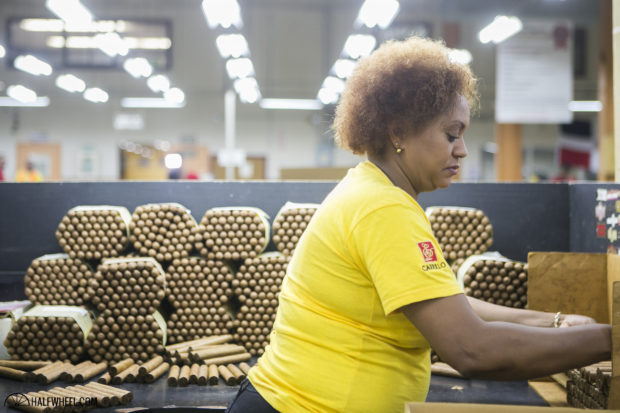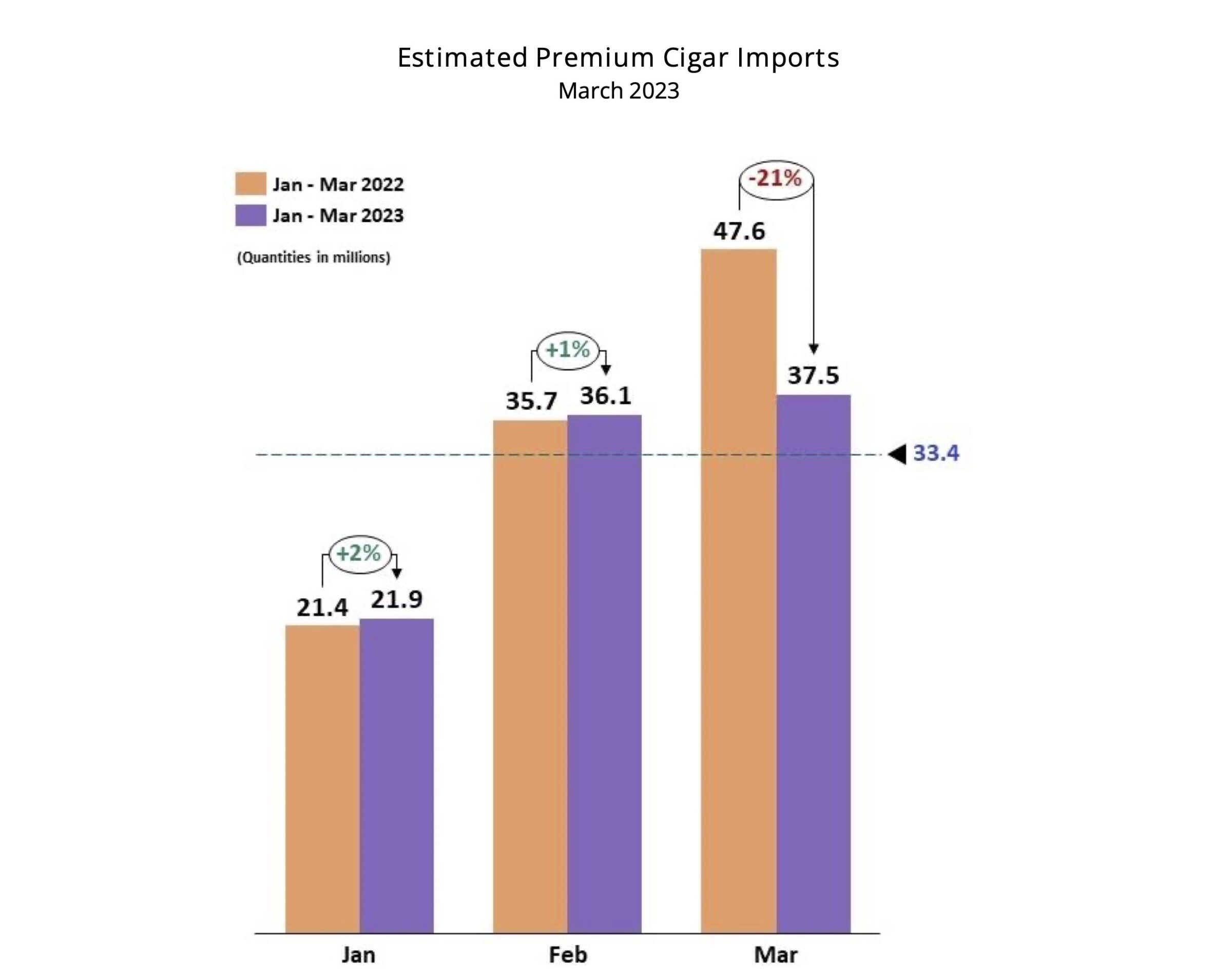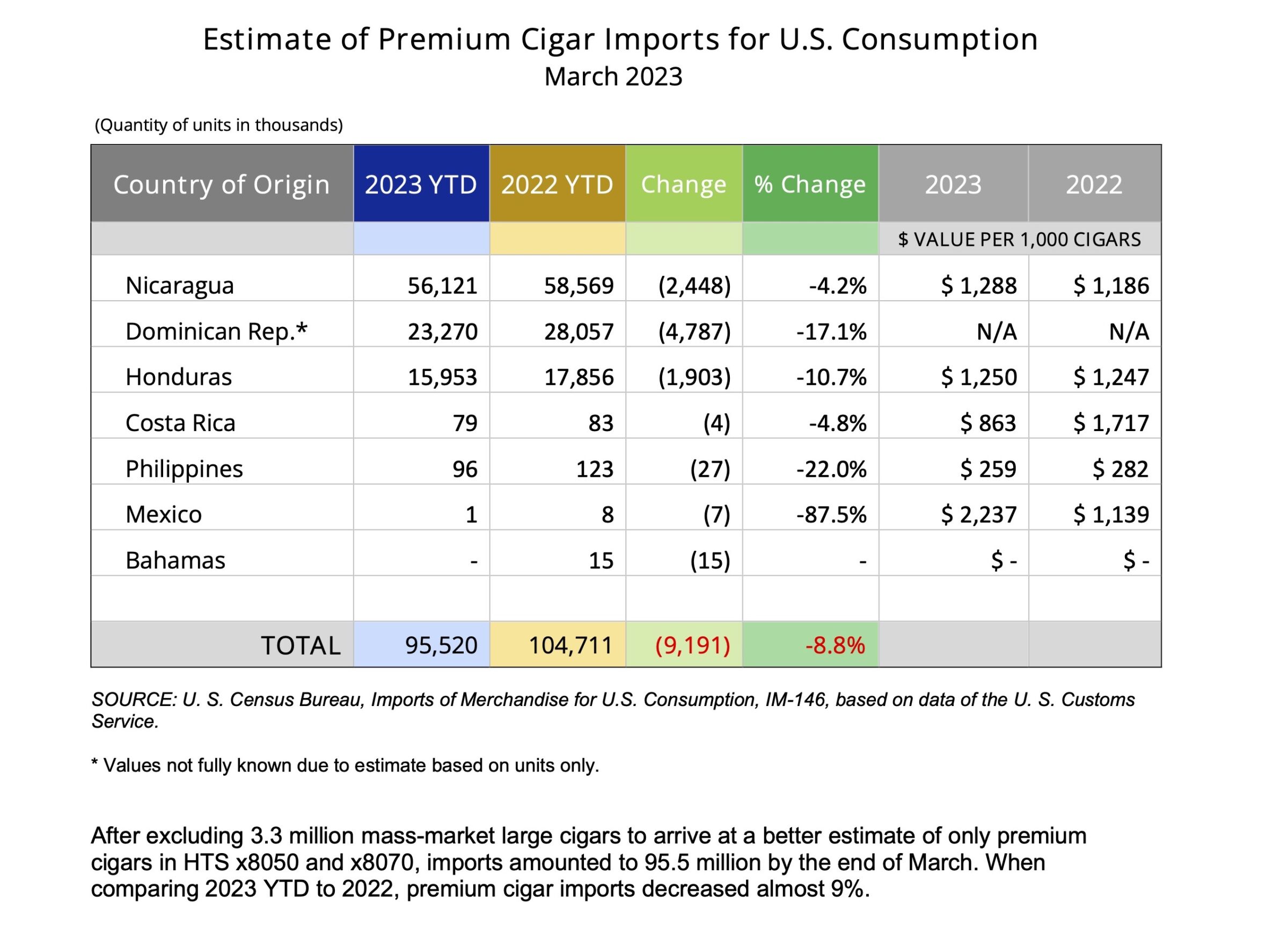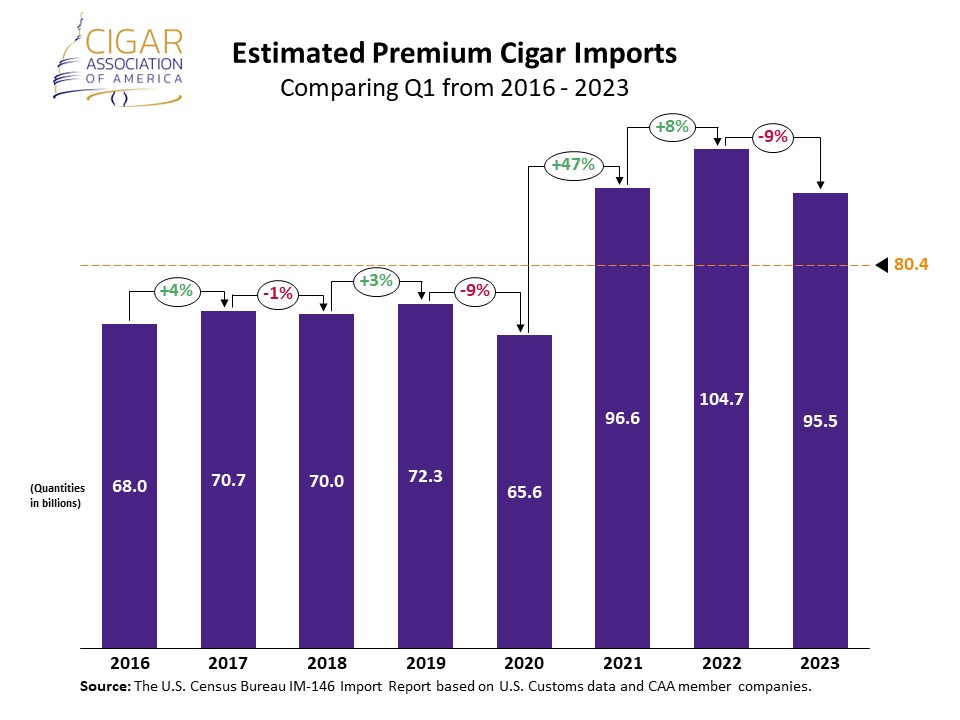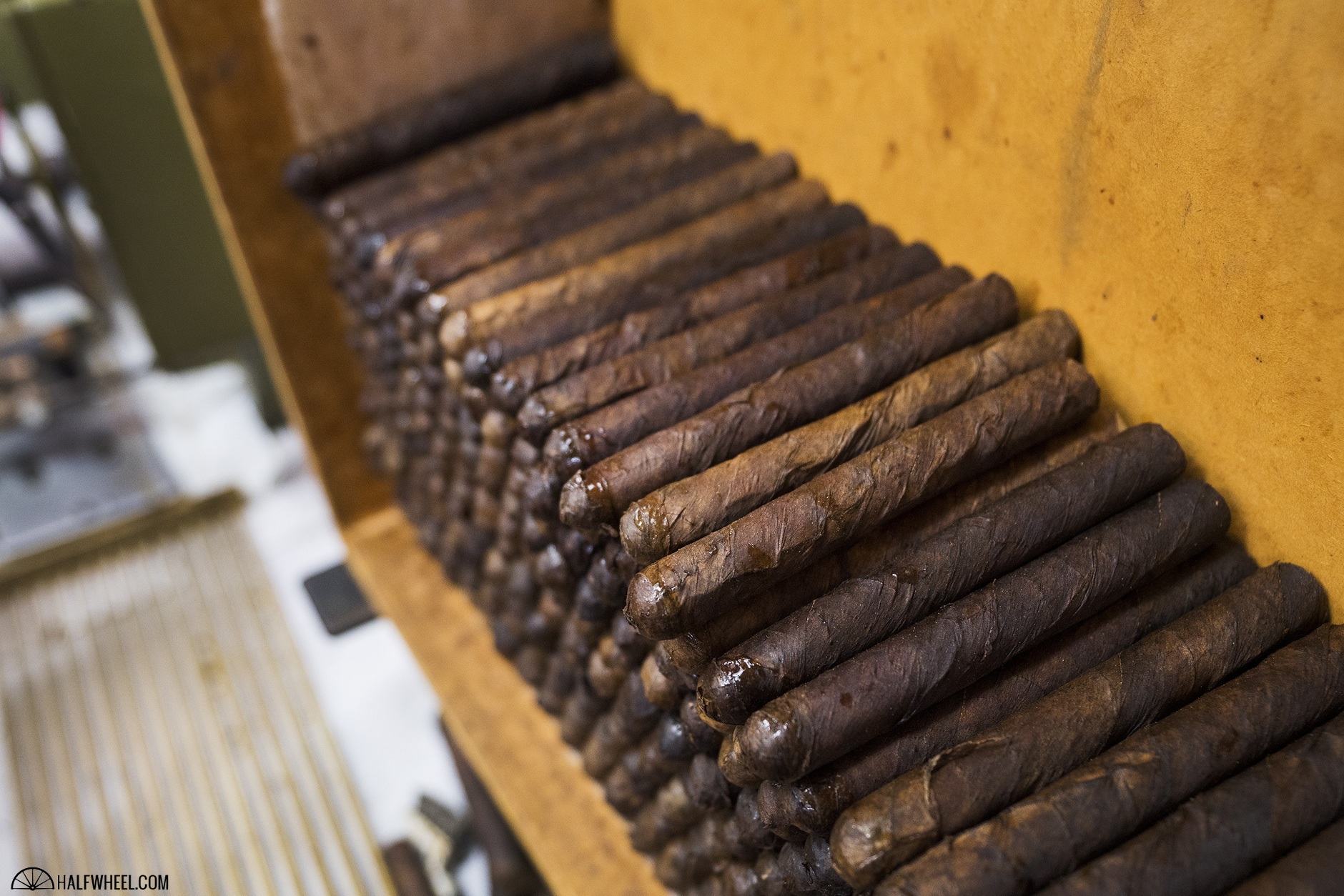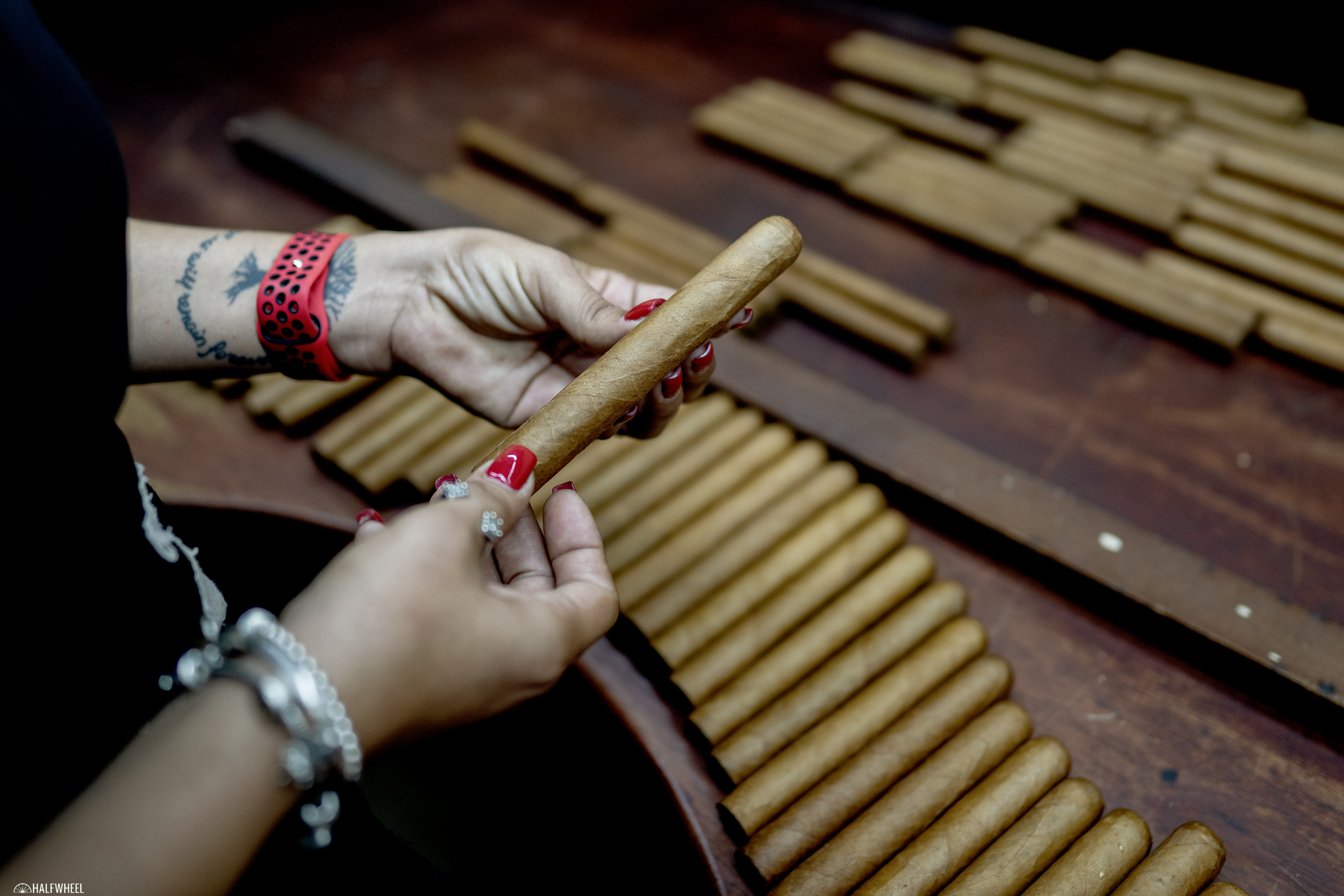The record-setting amount of premium cigars that were exported to the U.S. last year was not matched during the first three months of 2023.
According to a report from the Cigar Association of America (CAA), an industry trade group, premium cigar imports are down 8.8 percent compared to Q1 of 2022. The group estimates that there were 95.52 million premium cigars imported to the U.S. during Q1, down from 104.71 million a year ago.
While the pace of imports in January and February were slightly positive, up 1-2 percent compared to last year, March 2023 was down 21 percent compared to last March. The CAA notes that more premium cigars were imported to the U.S. last March than in any month of 2022.
Nicaragua remains the leading exporter of premium cigars to the U.S. and is actually growing its market share, even if imports are down. Last year, Nicaragua was responsible for 55.9 percent of all premium cigars exported to the U.S., that number is now up to 58.8 percent.
After two record-setting years for cigar imports in 2021 and 2022, it’s not surprising to see imports begin to cool off. This data also mirrors what multiple cigar companies have told halfwheel: after nearly three years of reduced inventory levels and increased demand—due to a variety of factors brought on during the COVID-19 pandemic—the situation at retail stores is beginning to look much more like pre-COVID-19 times. At both brick-and-mortar and online retailers, backorders have been fulfilled, inventory levels have been built back up and demand—while still strong—is not growing.
Still, these numbers show the cigar market remains incredibly strong compared to where it was prior to the pandemic. For context, in Q1 2019, the U.S. imported an estimated 76.8 million premium cigars, meaning that even with the recent cool-off, imports were still up 24.38 percent compared to four years ago.
CAA calculates these numbers based on both the import numbers provided by the U.S. Census Bureau, U.S. Customs Services and information from cigar companies themselves. The trade group’s numbers are not exact because of reporting differences; it estimates how many “large cigars” were actually “premium cigars.” The differences between the two are that there are some machine-made cigars that meet the U.S. definition of a “large cigar,” though those cigars would not be considered premium cigars by most people.

